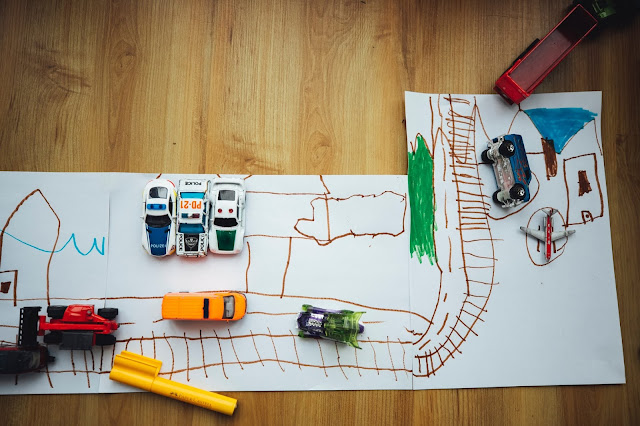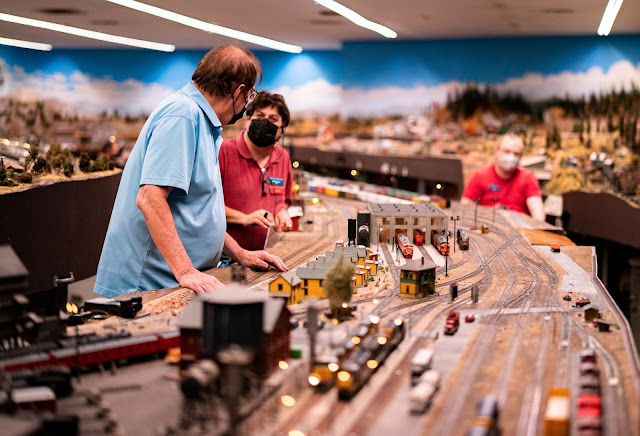How to Conquer Toy Clutter
It's pretty much impossible to make your house look like children don't live there when, in fact, children do. Maybe it's because you've put away your breakables, you have every outlet plugged with covers, there's a high chair in the dining room, or the family room boasts a bulletin board covered with amazingly colored scribbles – I mean (ahem) drawings by your gifted child.
Of course you don't want to hide the fact that you have children, but that doesn't mean you want your house to look like some crazy clown went berserk in a toy store. You are fine with the fact that your house looks like kids live there, but you don't want it to look like the home of hoarders-in-training.
12 steps to tame the toys
Right now is a great time to reduce toy clutter, with the holidays (and new toys) just around the corner. Here's a process you can repeat two or three times a year.
1. Make time.
This doesn't work well if you do it bit by bit. Toys migrate, and I think they find sneaky ways to multiply! Block out an hour or two for the task, especially if you've never done it before, and do it all at once if you really want to make a difference.
2. Have a conversation.
If your kids are 4 or 5 and older, let them in on the process. Sit down at the table with a little snack and tell them they're going to throw all of their toys into piles on the floor. Make it sound fun and free-spirited, but not destructive. Tell them they're going to choose their favorites to keep, which means they'll be easier to find and to put away again. Some of the toys they don't keep can be given to other kids who don't have many toys. Most children respond very well to an opportunity to be kind and generous.
3. Gather some boxes or bags.
You'll be able to donate clean toys to a medical center, church, homeless shelter, school, orphanage, or a thrift store. Discard broken, incomplete, and uncleanable items.
4. Take it all out.
This is scary, I know. But it's the only way to see how much is really there. Do a rough sort – dolls/stuffed animals, toy vehicles, Legos, toy dishes and food, books, etc. in separate piles. This will not only let you see that you have eight fire engines and 43 McDonald's Happy Meal toys, but it will give you ideas of how you want to organize things when you put them away.
Don't overthink this task. Your children might have some emotions about some of the toys, but make sure you aren't harboring any sentimental feelings. Ask
- Is the toy broken or are there pieces missing?
- Does your child play with this item on a regular basis?
- Has your child outgrown the toy?
Even if it seems tough, decide to toss broken or incomplete toys and books, to donate toys she hasn't played with in months, and to store very little for any future babies. (Full disclosure: I stored a big bucket of my kids' Legos which my grandsons now play with.)
6. Choose the Top Five.
If there are many multiples, ask your child to pick her Top Five dolls, or cars, or games, etc. Obviously, if you need to fudge toward the Top Six or even Top Ten because the decision is just too difficult, go ahead. This process is not meant to be traumatic.
The idea is the same as when you declutter your own belongings: You want your child to think about what she loves and uses, and let go of the rest.
There's one exception to the Top Five: Do consider removing all freebie toys!
7. Designate toy homes.
Maybe you have a toy closet or a toy shelf in the living room, or your children each have a bin in their bedrooms. Let the storage area(s) set boundaries for what you will keep. If things won't fit, then something must go.
Since birthdays and holidays usually bring new toys, don't fill your toy storage to capacity. Leave room for what's coming.
8. Clean.
Wipe down the storage shelves and bins before returning items.
9. Group like items together.
10. Store toys sensibly.
It might not make sense to place all toys in the playroom. Of course you want your children to share their toys, but it's also true that a 6-year-old will play with things that aren't suitable for his 3-year-old sibling. That's why it's good to have some toy storage in each child's room. The same is true for books. A school-age child will have some books that you don't want the baby to chew on. (I like wall-mounted racks* that display the covers of books.)
* This blog is reader-supported. If you purchase through my links, I may earn a small commission.
Toys such as blocks, Lincoln Logs, Legos, trains, and cars need room to spread out, so it probably makes sense for those to be stored in the living or family room. Games or craft supplies might be stored in a cabinet near the table where they will be used.
I don't mean that when your children are playing with Legos they can only play with the Legos and must put them away before they take out anything else. Blocks, wooden trains, Matchbox cars, and other toys work wonderfully together and enhance the creativity of each.
But when your children decide to draw, or play with dolls, or begin a game of Ticket to Ride, then they need to put other stuff away before moving on to a completely new activity. You don't want to repeat Step #4 on a daily basis!
12. Change toy-buying habits.
Once you return the keepers to your toy shelves, notice how much more peaceful and easy-care the area is. Not only does everything fit comfortably, but the whole space feels lighter. Your kids will play with the same toys they always liked best, but they won't have to dig through (and throw on the floor) a bunch of extraneous stuff to find their favorites.
Recommit to letting fewer toys into your house, because at least 90% of the battle is in the numbers. It's so much easier to keep things picked up and organized if you and your kids aren't overwhelmed by the volume of toys.
- Watch less television to reduce the opportunity for marketers to influence your children.
- Resist fads, which are artificially generated by toy companies to enhance their bottom line.
- Find a local toy library, which will enable you to borrow toys instead of buying them.
- Don't give in to temper tantrums at the store – it will just encourage your child to use the behavior regularly. Stay calm and remain firm.
- Limit your toys too. If you are constantly buying the latest fashion, technology, or décor, your children will follow your example.
Remember, kids don't need a houseful of toys to have fun. Let them discover how much they can do with paper and crayons, a beach ball, a pair of pull-back racecars, or several play scarves. Your children will be more inventive with fewer things, and they'll learn to value their imaginations more than their possessions.
Want more? "The 20 Toy Rule" and "How to Be a Minimalist Parent"
Updated April 2023







Comments
Post a Comment